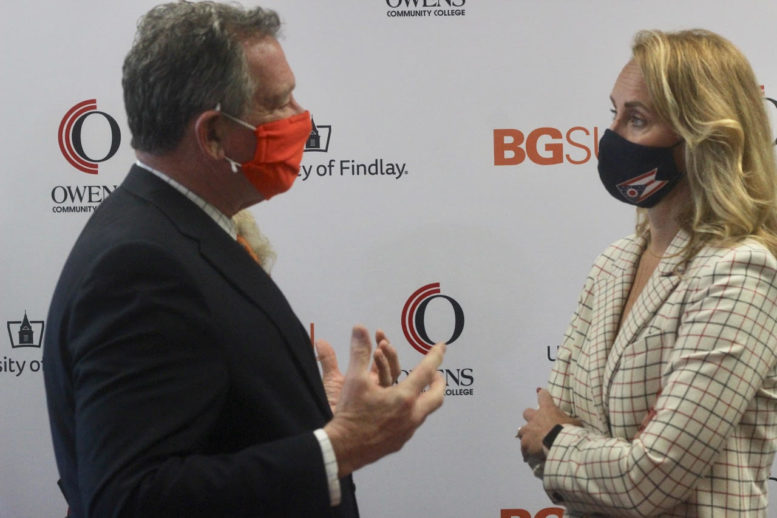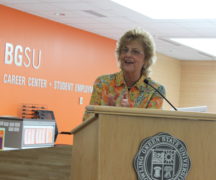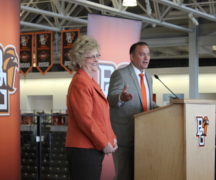By DAVID DUPONT
BG Independent News
The new Center for Advanced Manufacturing and Logistics will bring the resources of Northwest colleges to address the needs of regional industry.
The presidents of Bowling Green State University, Owens Community College, and the University of Findlay signed the agreement Friday (Nov. 12).
“Our goal is to absolutely create a world class network of educational opportunities around manufacturing logistics and innovative robotics,” BGSU President Rodney Rogers said.
The center, which is still in its infancy, will provide worker training, education in a range of industrial fields, and research to regional corporations and development agencies.
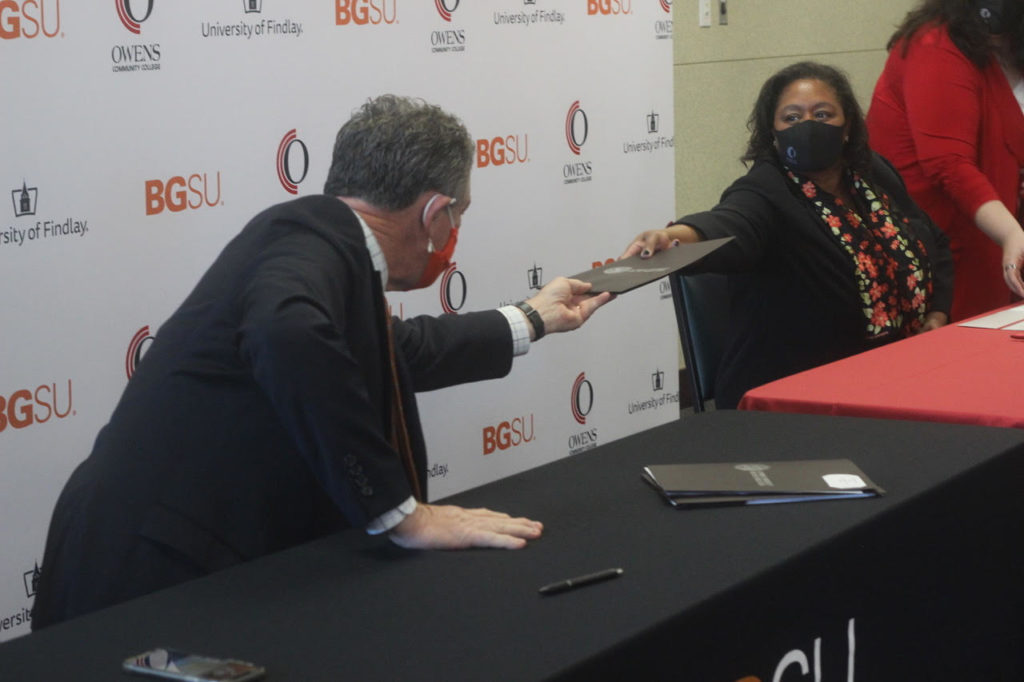
The center, which was spawned in discussions among the three presidents, is being launched with $2 million in funds appropriated by the state legislature. The hub of the center will be at Owens’ Findlay campus. State Rep. Jon Cross, R-Kenton, said he pushed to secure $1 million in the Ohio House and credited State Sen. Theresa Gavarone, R-Bowling Green, and State Sen. Rob Colley, R-Napoleon with securing another $1 million in the senate.
That money helps “plant the flag for the center,” said Tim Mayle, the executive director of Findlay Hancock County Development. It should help the center get federal grants.
In her opening remarks, Owens President Dione Somerville tied the creation of the center to the need for trained employees. “The workforce has been falling since before the pandemic. The pandemic has only served to exacerbate this reality.”
In the past five years, she said, more than 8,800 new jobs in advanced manufacturing have been created. The program will provide those workers with the credentials they need.
That training will be directed by the employers’ requirements. “Industry will have a direct line to institutions to insure that the skills they need are taught learned and applied on the job,” Somerville said.
“We do better when we listen to private sector because they know better what it takes to move forward,” said the state’s Director of Development Lydia Mihalik, who previously served as Findlay mayor. The state has more than 650,000 jobs in manufacturing.
The center’s mission goes beyond training though. It will provide research capabilities to help sort out logistical issues and help companies decide where best to locate, Tim Mayle said.
It will also provide professional and leadership training, said University of Findlay President Katherine Fell.
The presidents, she said, understand business because they run their own mission-driven not-for-profit institutions.
Somerville said this will help make the region a magnet for companies and workers, and offer residents a pathway to “future-proof jobs.”
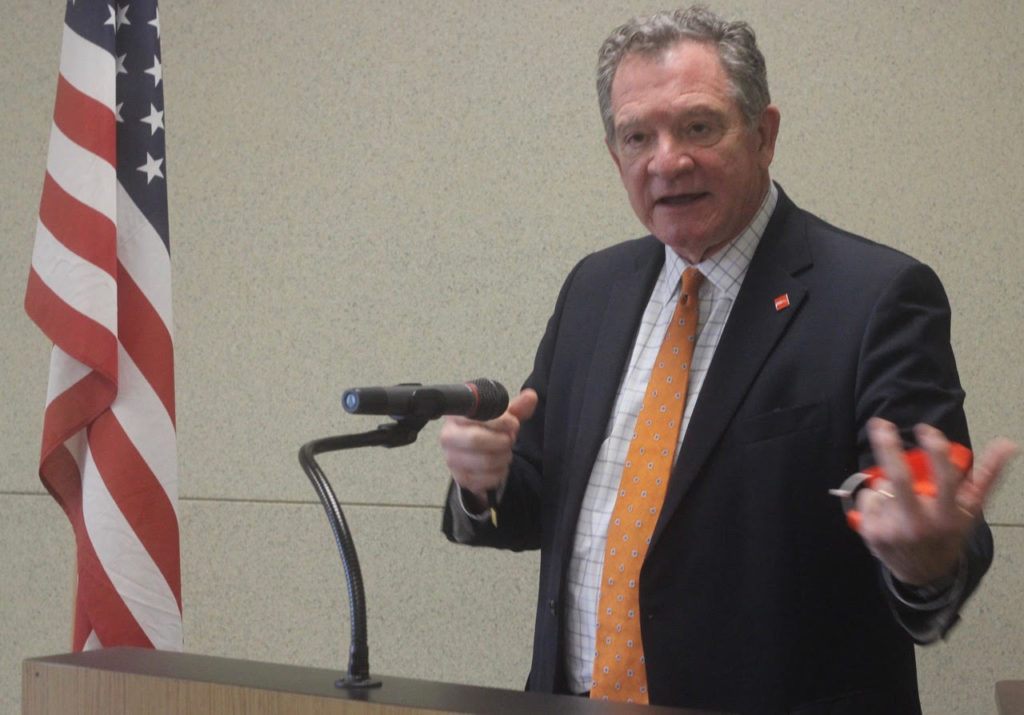
Rogers said that each of the institutions add something to the mix.
Owens excels at workforce development with its certificate and associate degree programs. “That’s their lane.”
Findlay has particular strengths in environmental health and emergency management, in which it has both undergraduate and graduate programs.
For BGSU the center fits well with its programs in software development, mechatronics, and supply chain management. “We have been investing in those areas in the last few years,” Rogers said.
The center will also offer applied research opportunities for BGSU faculty and graduate students, Rogers said. “We have some great faculty who are very interested in working on real world, corporate and industry issues.”
Rogers said: “Bowing Green continues to work very hard to insure our degree offerings and programs are aligned with the needs of society. That does not take away from the importance of a strong and robust liberal arts education to insure we’re graduating students who are well prepared to be citizens and leaders. But it’s also making sure we’re meeting the needs of society and our region.”
On Wednesday, Rogers and Ohio Attorney General Dave Yost signed an agreement to create a Center for Justice Research, which also focuses on applied research. “It’s been an exciting week,” Rogers said.
The university has also rolled out its new School of Nursing and will soon offer a doctorate in physical therapy.
As the pool of high school graduates is beginning to decline, BGSU is working to adjust to that new reality.
The center could help bring students here, Rogers said. “We hope that with these three institutions working together, we will become a magnet for talent.”

